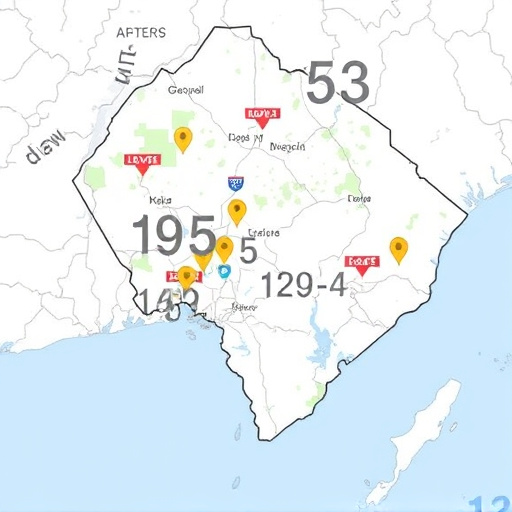Understanding EPA and CARB regulations is crucial for US automotive businesses, as these agencies enforce strict emission and environmental standards, especially in California. Compliance involves adhering to protocols for manufacturing, testing, and certifying vehicles with focus on emission levels, fuel efficiency, and performance. The adoption of uniform 50-state legal intake systems, approved by both EPA and CARB, simplifies compliance, reduces costs, and speeds up vehicle development. Staying ahead requires keeping pace with these systems, staying informed about changes, investing in cleaner technologies, and adopting advanced engineering techniques. Future trends suggest more stringent regulations focusing on greenhouse gas emissions and alternative fuel sources.
“In today’s highly regulated automotive landscape, understanding EPA (Environmental Protection Agency) and CARB (California Air Resources Board) compliance is paramount for manufacturers. This comprehensive guide explores the intricate world of these regulatory bodies and their joint oversight over vehicle emissions. With a focus on the recent developments of 50-state legal intake systems approved, we analyze the benefits and challenges this brings to the industry. Furthermore, we offer strategic insights and future trends for navigating these stringent EPA and CARB regulations.”
- Understanding EPA and CARB Compliance: A Comprehensive Overview
- The Impact of 50-State Legal Intake Systems Approved: Benefits and Challenges
- Strategies for Navigating EPA and CARB Regulations: Best Practices and Future Trends
Understanding EPA and CARB Compliance: A Comprehensive Overview

Understanding EPA and CARB compliance is crucial for businesses operating within the United States, especially those in the automotive sector. The Environmental Protection Agency (EPA) and California Air Resources Board (CARB) are tasked with regulating emissions and ensuring the environmental integrity of vehicles sold across the nation. These regulatory bodies have established stringent standards to combat air pollution and greenhouse gas emissions, reflecting a 50-state legal intake system approved for harmony and consistency nationwide.
Compliance involves adhering to strict protocols for vehicle manufacturing, testing, and certification. CARB, known for its progressive approach, often sets the bar higher than EPA requirements, particularly in regions with more severe environmental challenges, like California. Manufacturers must navigate these standards, ensuring their products meet or exceed emission levels, fuel efficiency ratings, and other performance indicators. This comprehensive overview aims to equip businesses with knowledge about these regulatory frameworks, emphasizing the importance of staying informed to avoid legal pitfalls and contribute to a greener future.
The Impact of 50-State Legal Intake Systems Approved: Benefits and Challenges

The implementation of 50-state legal intake systems approved by both the Environmental Protection Agency (EPA) and California Air Resources Board (CARB) marks a significant milestone in environmental regulation. This unified approach streamlines the process for automakers, ensuring consistent standards across the nation while simplifying compliance procedures. The benefits are manifold: reduced regulatory burdens, lower costs, and more efficient vehicle development cycles. Automakers can now focus on innovation rather than navigating a complex web of varying state regulations.
However, challenges remain. Achieving 50-state approval requires meticulous attention to detail, as each state has its unique environmental considerations. This uniformed system must strike a delicate balance between national consistency and local needs, ensuring that the environment is protected while allowing for flexibility in implementation. Additionally, maintaining such a vast network of regulations requires continuous updates and adjustments to keep pace with evolving technologies and environmental concerns.
Strategies for Navigating EPA and CARB Regulations: Best Practices and Future Trends

Navigating EPA (Environmental Protection Agency) and CARB (California Air Resources Board) regulations requires a strategic approach, especially with the constant evolution of environmental standards. Manufacturers and automakers must stay ahead of these 50-state legal intake systems approved for various pollutants, emission controls, and fuel efficiency mandates. Best practices include staying informed about upcoming changes, adhering to strict testing protocols, and investing in research and development for cleaner technologies.
Future trends suggest a shift towards more stringent regulations, focusing on reducing greenhouse gas emissions and promoting alternative fuel sources. Staying proactive involves adopting advanced engineering techniques, optimizing production processes to minimize waste, and embracing innovative materials that meet environmental standards. Manufacturers can also collaborate with industry peers and regulatory bodies to share insights, ensuring compliance while keeping up with the rapid pace of change in this sector.
In light of the above discussions, it’s clear that understanding and adhering to EPA and CARB compliance regulations, including the significant impact of 50-state legal intake systems approved, is crucial for the automotive industry. As we move forward, adopting best practices and staying informed about future trends will be essential in navigating these complex standards. This comprehensive overview underscores the importance of proactive strategies to ensure sustained compliance in today’s dynamic regulatory landscape.














